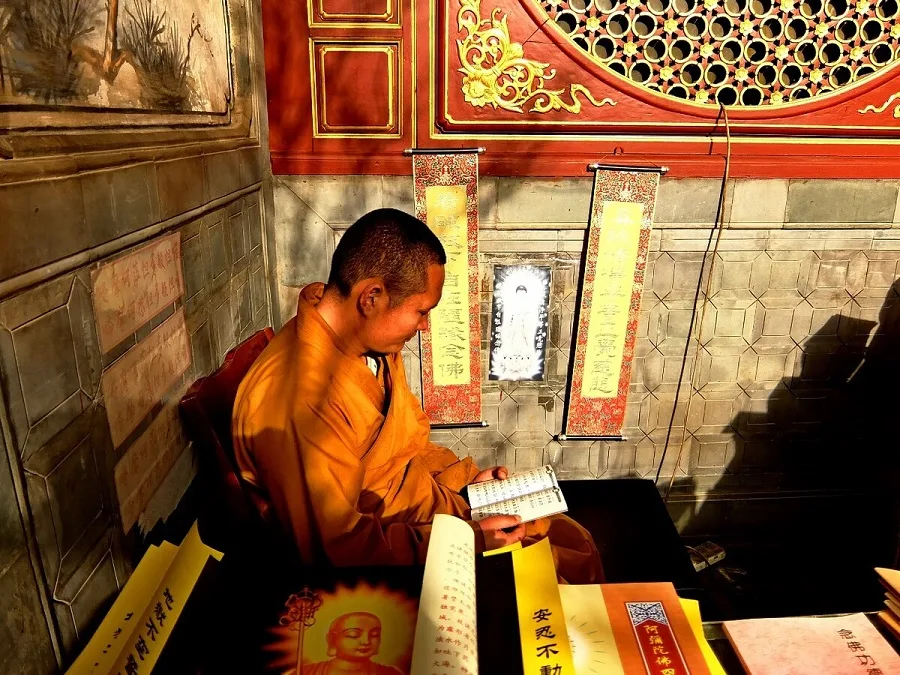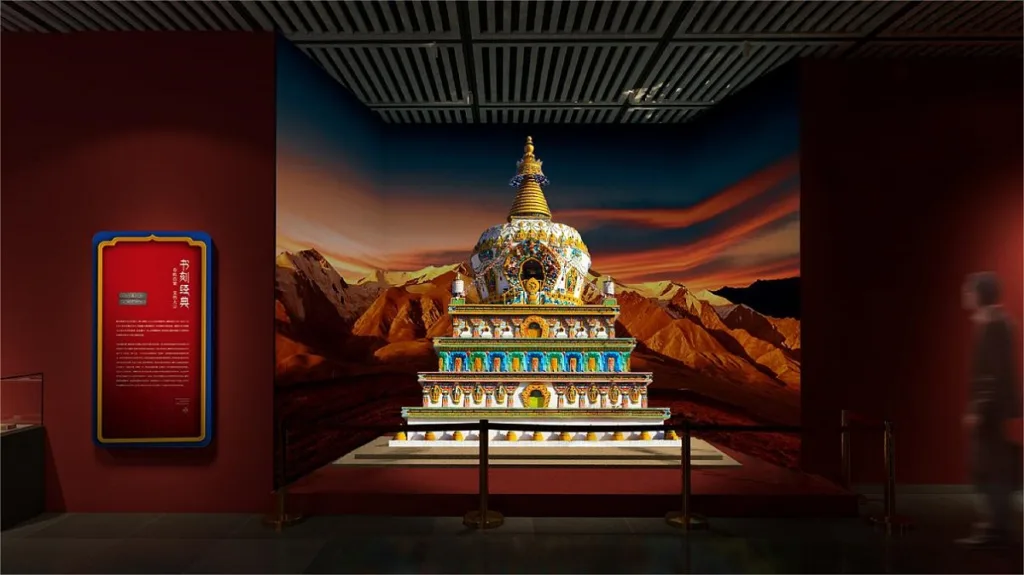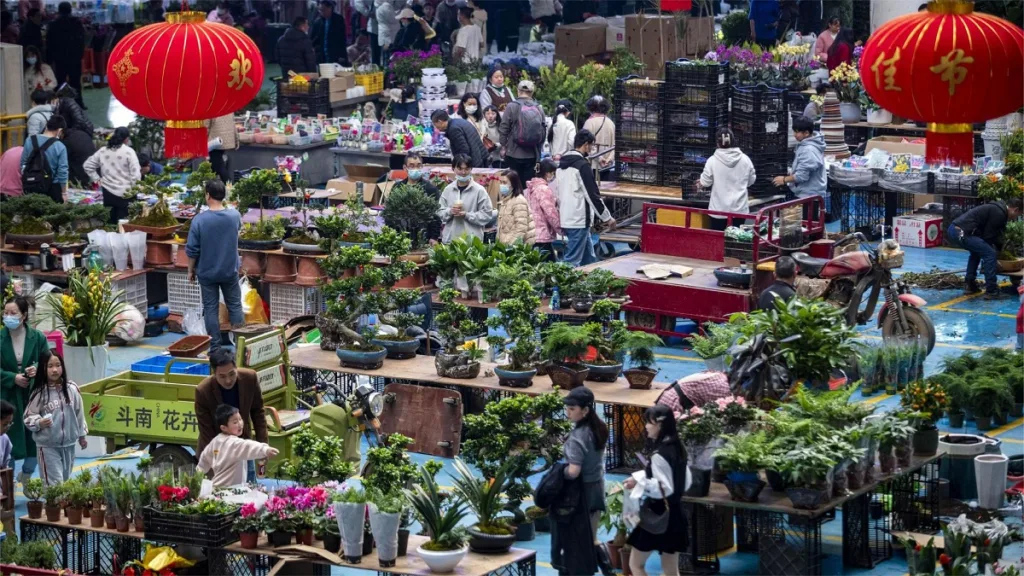Guandu Ancient Town (官渡古镇) in Kunming is a historical trading hub dating back over a thousand years. It is not only one of the birthplaces of ancient Dian culture but also renowned as an ancient ferry crossing and Buddhist sacred site in central Yunnan. Within an area of less than 1.5 square kilometers, visitors can explore numerous attractions from the Tang, Song, Yuan, Ming, and Qing dynasties, including the “Five Mountains,” “Six Monasteries,” “Seven Pavilions,” and “Eight Temples,” along with hundreds of well-preserved traditional “Yin-Style” dwellings, earning the town the nickname “Little Yunnan.” Guandu Ancient Town boasts over 10 key national, provincial, municipal, and district-level protected cultural relics and over 30 historical sites, with the “Vajra Pagoda” in front of the Miaozhan Temple being the most famous.
Apart from admiring the ancient temples and cultural landmarks, one of the main attractions of Guandu Ancient Town is its local snacks. Among them, Guandu Baba, also known as Mai Baba, is particularly famous. The most popular spot to try it is the Eyeglass Baba shop (眼镜粑粑) on the commercial street near the Vajra Pagoda. People queue up every day for their signature baba stuffed with sesame or peanuts.
Table of Contents
- Basic Information
- Location and Transportation
- Highlights of Guandu Ancient Town
- Vlog about Guandu Ancient Town
- Attractions near Guandu Ancient Town
Basic Information
| Estimated Length of Tour | 3 hours |
| Ticket Price | Free |
| Opening Hours | 24 hours a day |
| Telephone Number | 0086-0871-67262799 |
Location and Transportation
Guandu Ancient Town is located 8 kilometers southeast of Kunming City, Yunnan Province, on the northern shore of Dianchi Lake and downstream of the Baoxiang River. Visitors can take bus route 169 to the Guandu Ancient Town / Guangfu Road Intersection stop (官渡古镇/广福路口站) and walk approximately 300 meters to reach the town.
Highlights of Guandu Ancient Town
Miaozhan Temple

Located in Luofeng Village, Guandu District, Kunming City, Miaozhan Temple is the foremost among the “Six Temples” of Guandu. Originally part of Dianchi Lake, the temple site was covered with accumulations of snail shells, leading to its alternative name, Luofeng Temple. Built in the 27th year of the Yuan Dynasty (1290 AD) and completed in 1295 AD, it collapsed due to flooding and was rebuilt at its current location in the center of the ancient town in 1325 AD. In the second year of the Tian Shun reign of Emperor Yingzong of Ming Dynasty (1458 AD), the eunuch Luo Gui, stationed in Yunnan, carried out extensive repairs and constructed two brick pagodas inside the mountain gate and a Vajra throne-style stone pagoda outside the mountain gate, known as the Vajra Pagoda.
Vajra Pagoda

The Vajra Pagoda of Miaozhan Temple underwent renovations in 1696 and 1982. Built entirely of sandstone, the pagoda’s base is square-shaped, measuring 4.8 meters high and 10.4 meters long on each side. There are four cross-cutting archways on the base, one each to the east, west, south, and north, allowing passage for visitors. Above the base, there are five stupas, all of which are of the Vajra throne type. The main stupa in the center measures 16.05 meters in height and sits on a square-shaped, corner-notched Sumeru pedestal, with four sculpted guardian figures at each corner. Carved on the four sides of the stone are images of lions, elephants, peacocks, and Garudas reflecting Buddhist content. The upper part of the base features a seven-layered stone lotus pedestal supporting the inverted bowl-shaped stupa body, which has arched doors on all four sides, each containing a stone Buddha statue. Above the stupa body is a Sumeru-style stupa neck. The top of the pagoda has thirteen celestial wheels, a canopy, hanging eight bells, and four heavenly king statues. Above that is a stone-made circular aureole with small bells on all four sides, topped by a treasure bottle and a jewel.
During the Yuan and Ming dynasties (13th to 17th centuries), there was a trend of simplifying Buddhist rituals, leading to the construction of street-crossing pagodas and gate pagodas. Miaozhan Temple’s Vajra Pagoda is a prime example of this trend and holds significant importance in the study of Lama-style pagoda architecture’s development.
Yunzi Chess Hall

In spring 1980, Kunming No.12 Middle School Factory was renamed Yunnan Weiqi Factory, producing “Yunzi” brand Go pieces. The Yunzi produced by the Yunnan Weiqi Factory has a slightly convex front, flat bottom, natural curves, and a simple and sturdy appearance, providing a comfortable feel. The white pieces are translucent like jade, while the black pieces are dark and clear, resembling natural jade polished to perfection. In 2012, the factory relocated to Guandu Ancient Town and established the Yunzi Chess Hall, mainly for hosting high-level Go competitions, exhibiting exquisite Yunzi products, and showcasing Yunzi merchandise. The architecture of the Yunzi Chess Hall is unique, featuring a Yin and Yang Tai Chi diagram inlaid with black and white Yunzi at the entrance and a chessboard-like floor paved with black and white pebbles in the lobby. The Yunzi Exhibition Center collects and displays various styles of precious Yunzi pieces.



